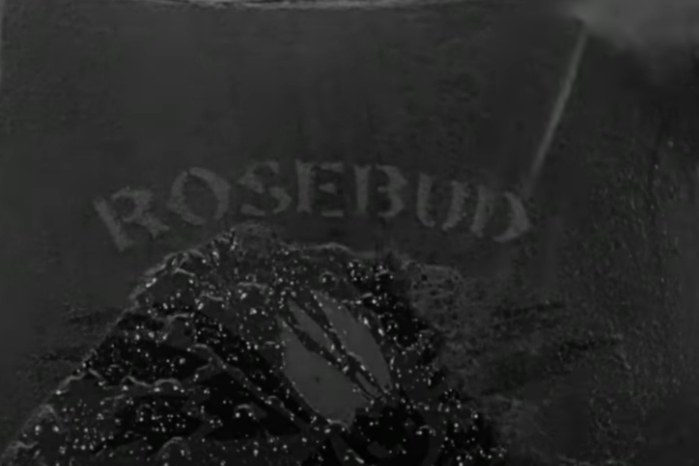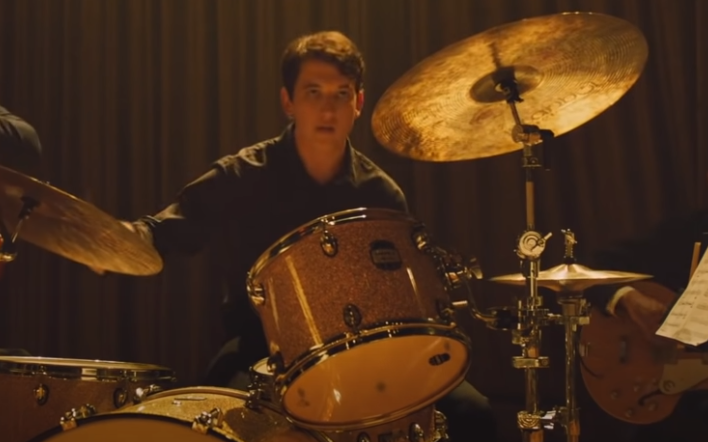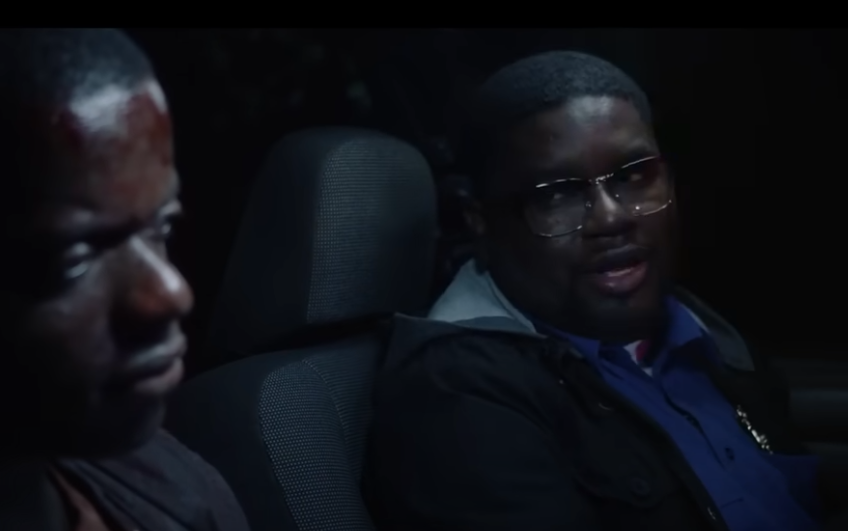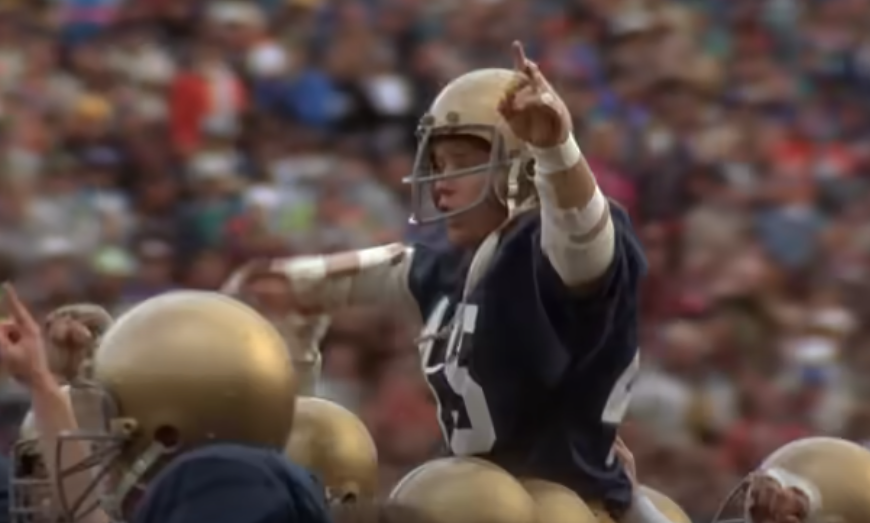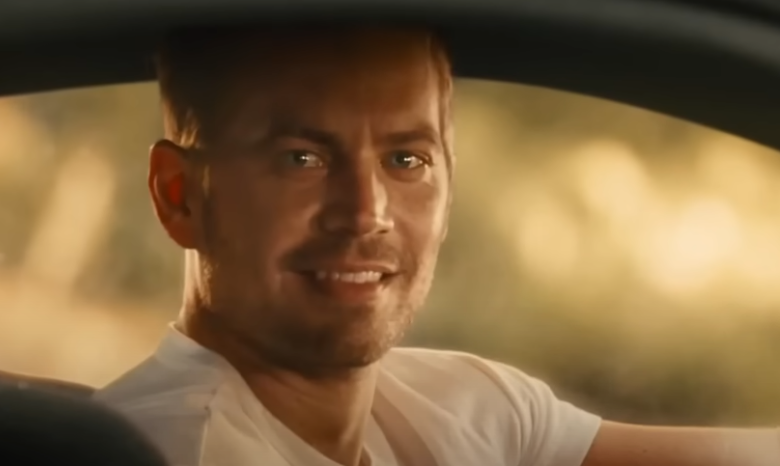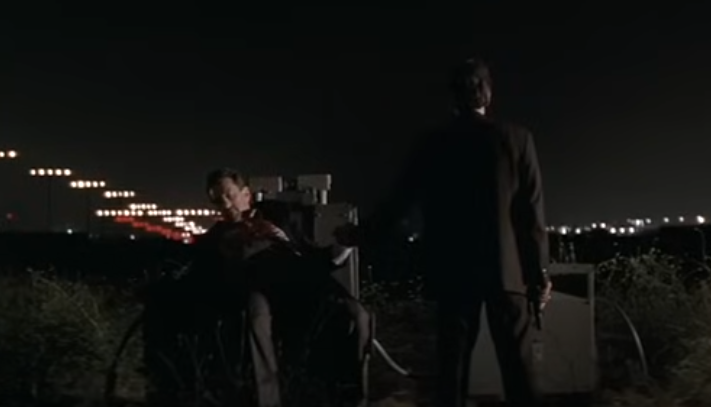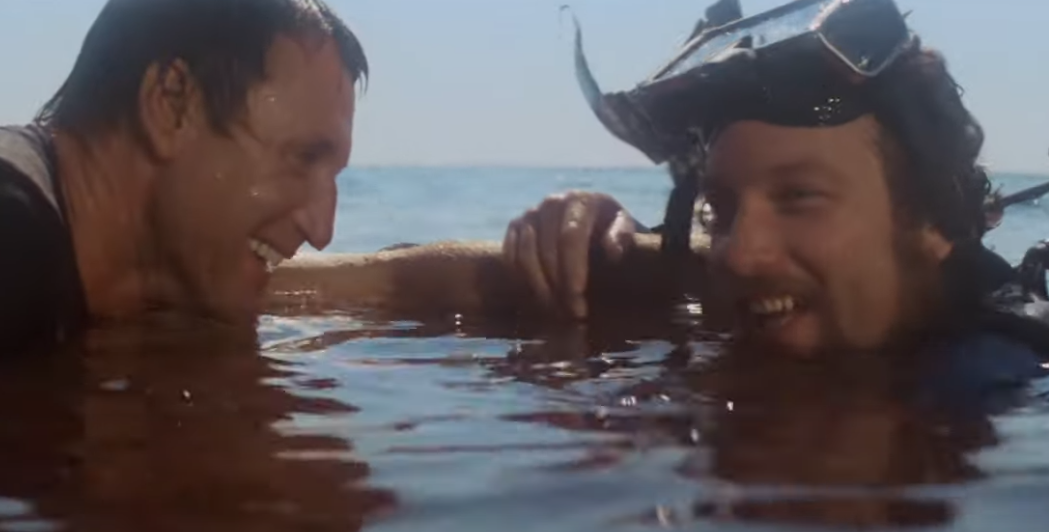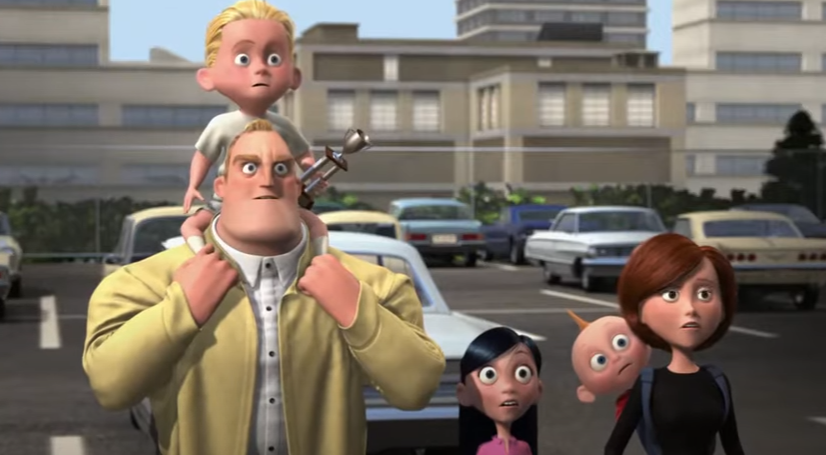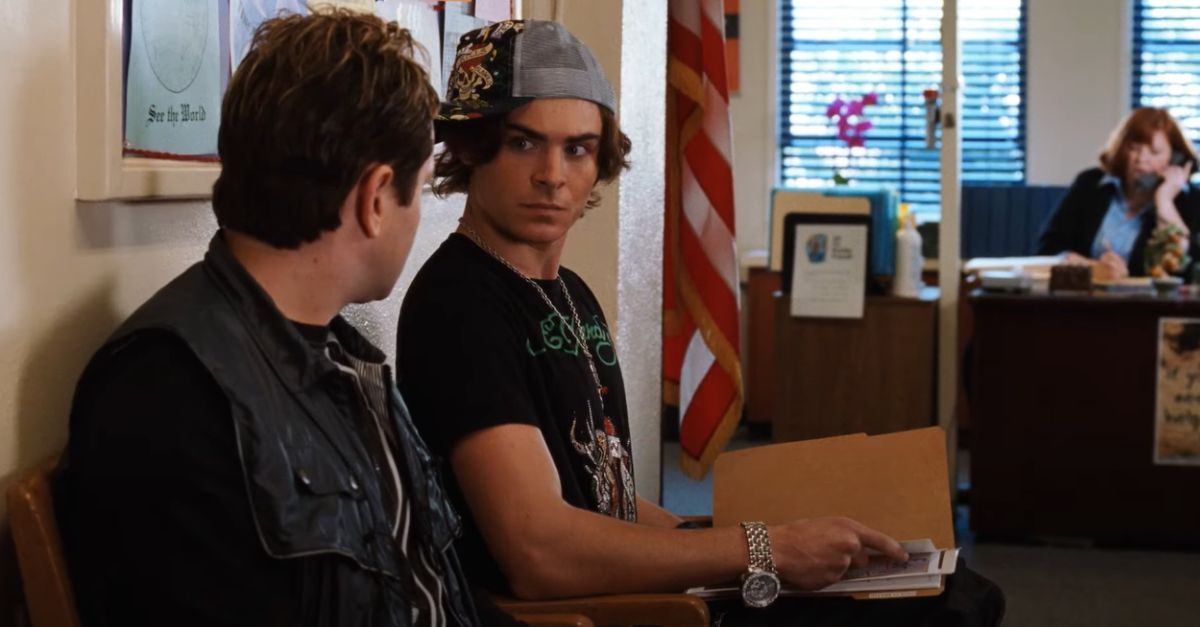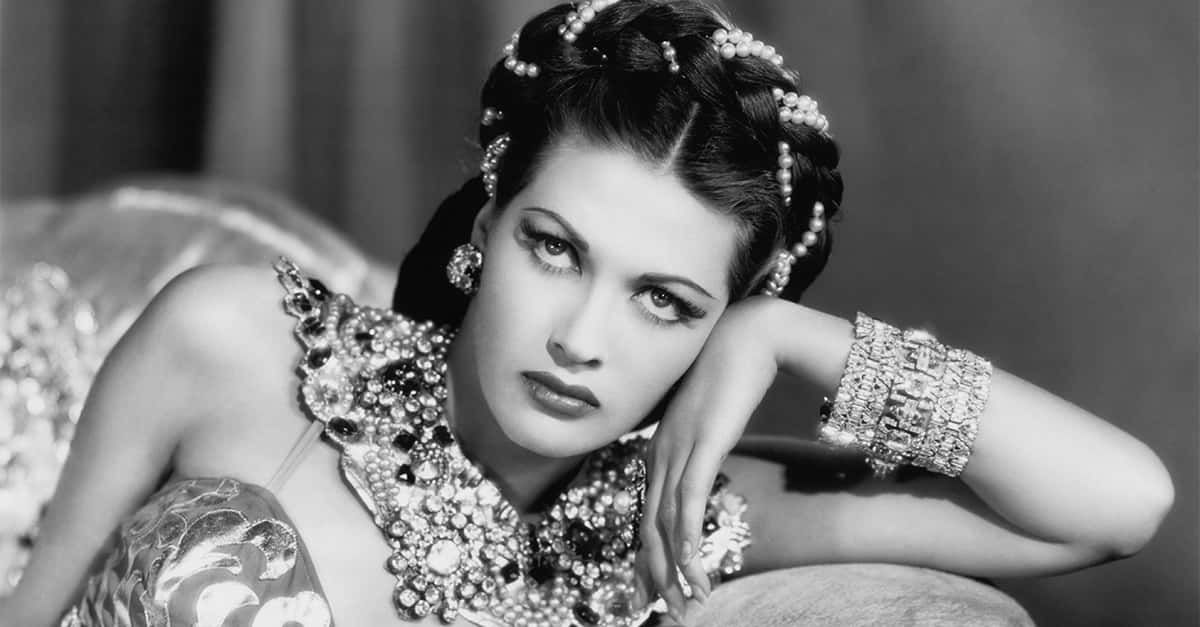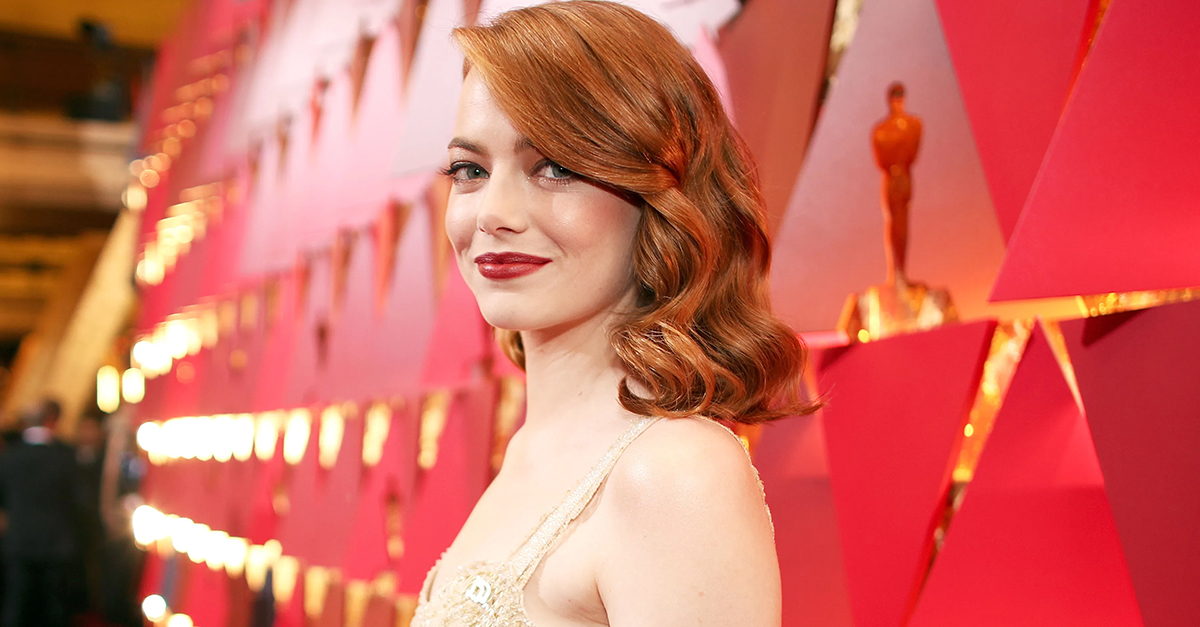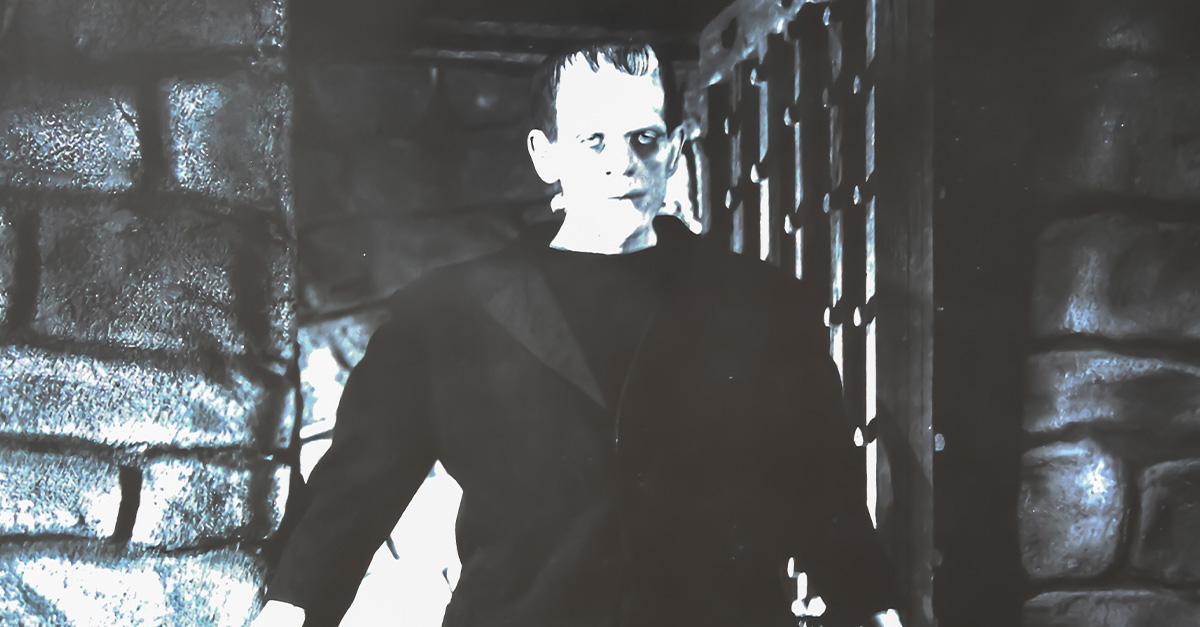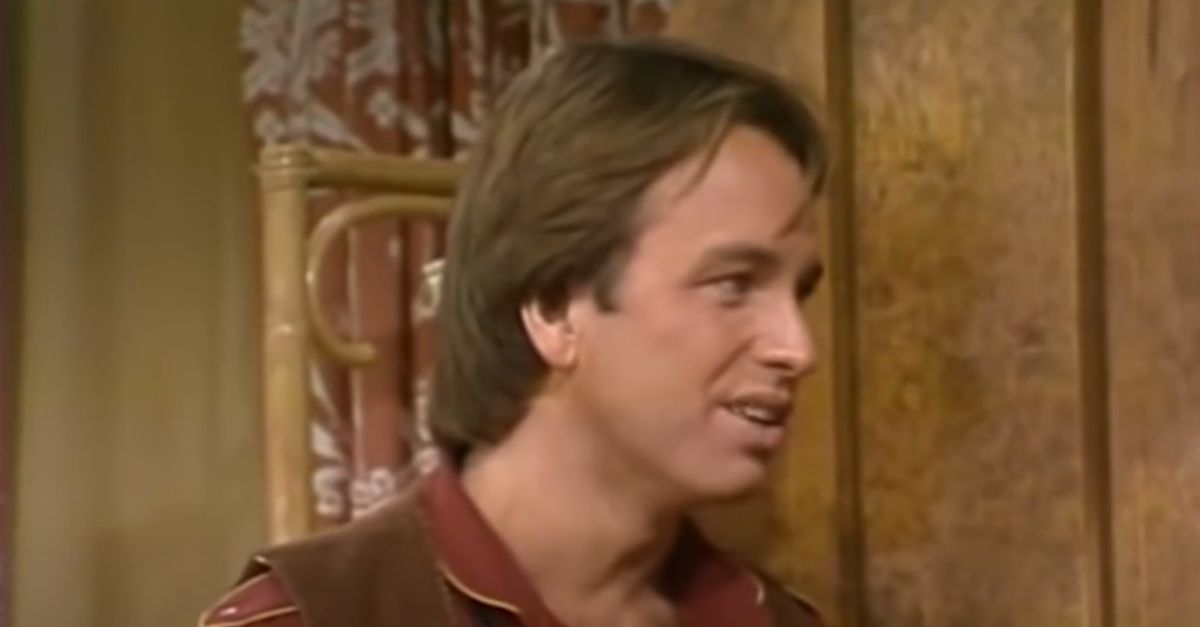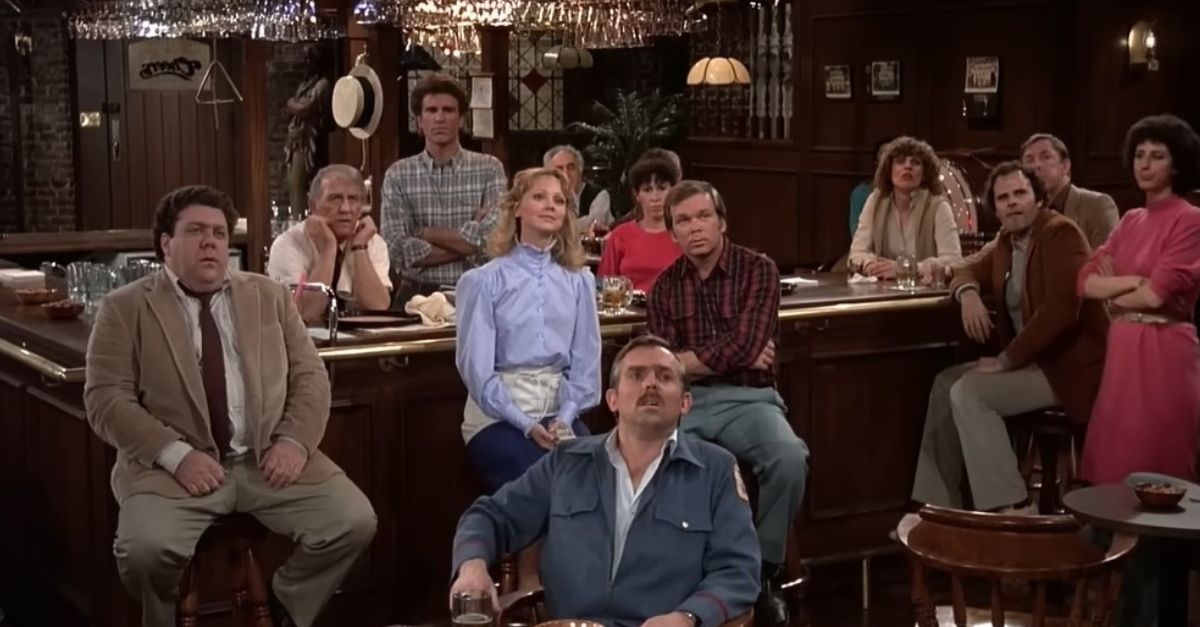It’s Not Always About Happily Ever After
A movie’s ending doesn’t have to be happy to be satisfying. Sometimes it’s okay if the hero doesn’t vanquish the bad guys, get the girl, and live happily ever after—it’s more important that loose ends are tied up. No one wants to wonder about key plot points as they walk out of the theater. When you think about movie endings in that light, the films with the most satisfying endings might surprise you.
Forrest Gump (1994)
It’s impossible not to cheer for Forrest Gump, the titular character of the iconic film. Our hearts broke for him over the loss of his true love, Jenny. But, in the movie’s final scene, it’s a joy to see him waiting for the school bus to pick up Forrest Jr, the son he fathered with Jenny.
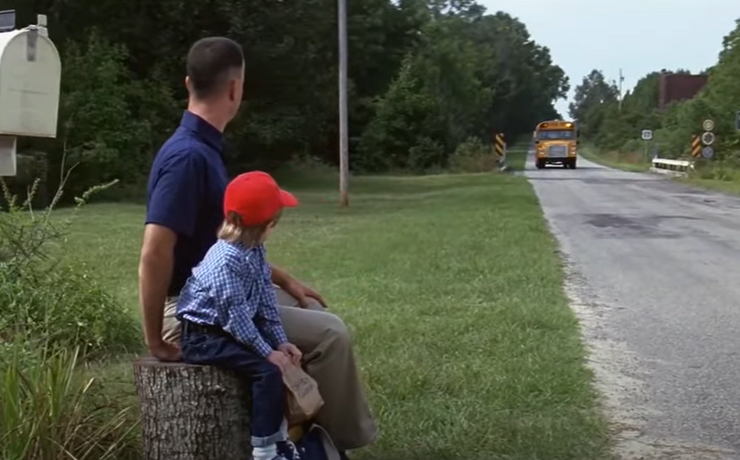 Paramount, Forrest Gump (1994)
Paramount, Forrest Gump (1994)
Django Unchained (2012)
Was there ever any doubt that Django would rescue his wife, a slave owned by a sadistic plantation owner? Although Django’s mission goes horribly wrong, he succeeds in the end—with a bang. The audience shares his satisfaction as he blows up the plantation house and then rides away with his beloved Broomhilda.
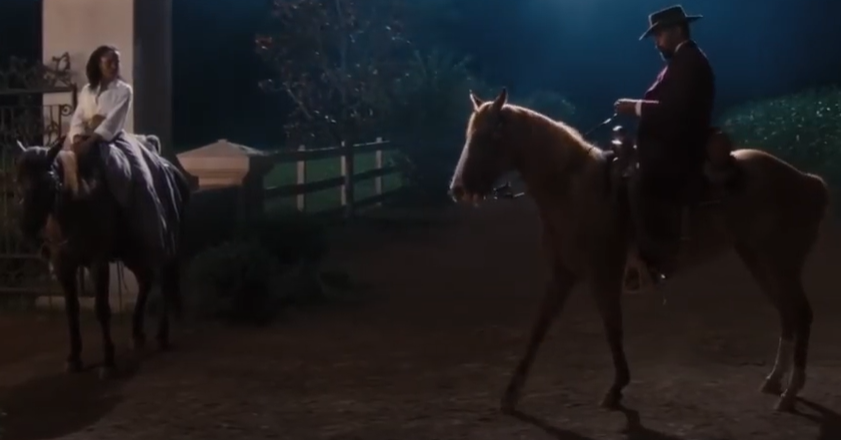 Columbia, Django Unchained (2012)
Columbia, Django Unchained (2012)
Star Wars: Return Of The Jedi (1983)
In the final installment of the original Star Wars trilogy, Luke Skywalker and Darth Vader square off in an epic duel. However, instead of dueling to the bitter end, Vader ultimately protects his son. As Vader draws his final breaths, Skywalker laments that he wasn’t able to save his father. However, Vader reassures him by saying, “You already have”.
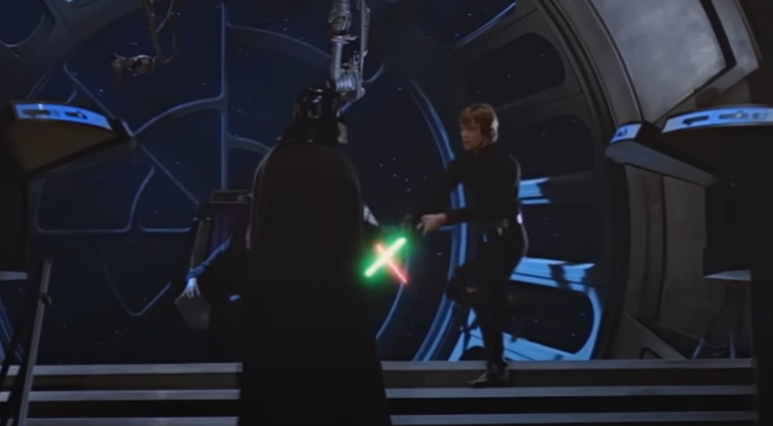 Lucasfilm, Star Wars Return of the Jedi (1983)
Lucasfilm, Star Wars Return of the Jedi (1983)
Avengers: Endgame (2019)
Captain America isn’t the only one who waited years to see his love story finally blossom—we all waited along with him. Although he’s been frozen in ice for decades, Captain America travels back in time in Avenger: Endgame, the final installment of the Avengers series. He decides to stay in the past and grow old with his beloved Peggy Carter.
 Walt Disney, Avengers: Endgame (2019)
Walt Disney, Avengers: Endgame (2019)
Groundhog Day (1993)
Every day is Groundhog Day—until it isn’t. We all rejoice with Bill Murray’s character when he wakes up the final time in the film, discovering that the calendar has rolled ahead to February 3. Even better, Rita wakes up beside him.
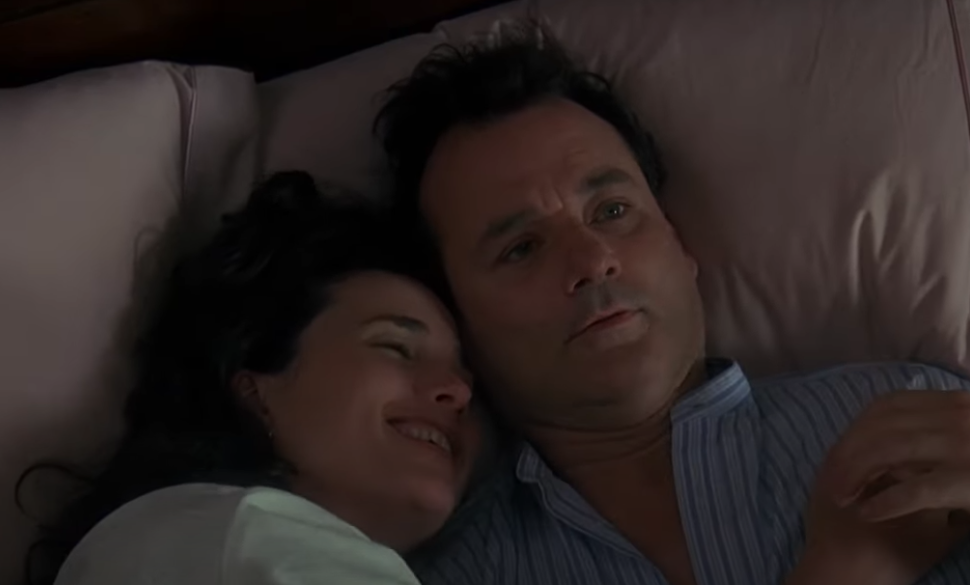 Columbia, Groundhog Day (1993)
Columbia, Groundhog Day (1993)
The Pursuit Of Happyness (2006)
The sadness throughout most of the film can make The Pursuit of Happyness difficult to watch. Will Smith’s character faces hardship after hardship. He spirals down to homelessness, staying in shelters with his young son. We share his euphoria at the movie’s end, when he’s offered a paid position at the firm where he has completed an unpaid internship.
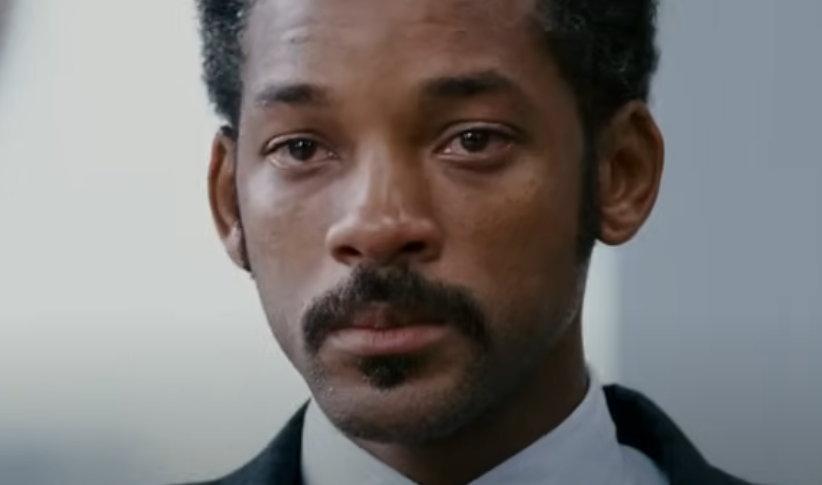 Columbia, The Pursuit of Happyness (2006)
Columbia, The Pursuit of Happyness (2006)
The Matrix (1999)
The ending of The Matrix is powerful: With a kiss, Trinity revives a lifeless Neo. This impossibility signifies that the Matrix is actually powerless. Any power it appeared to have was an illusion created by arbitrary rules.
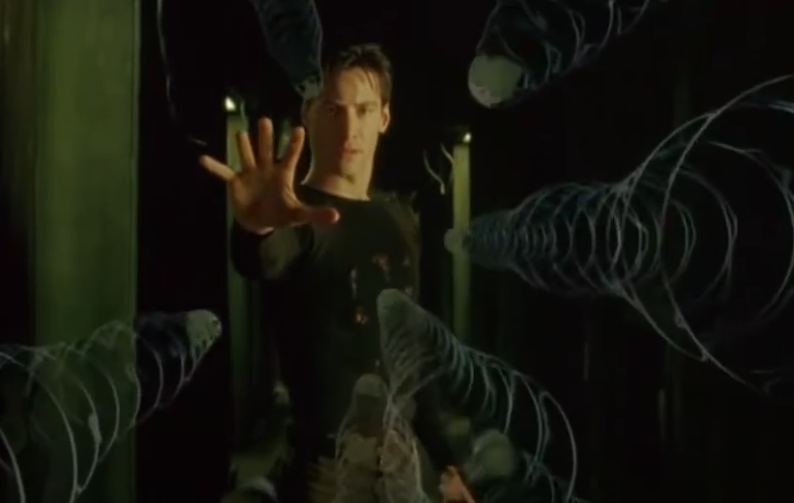 Warner Bros., The Matrix (1999)
Warner Bros., The Matrix (1999)
Citizen Kane (1941)
As Charles Foster Kane draws his last breath at the beginning of Citizen Kane, his final word is, “Rosebud”. As the film unfolds, we learn that although he was wealthy and successful, his life was empty and devoid of real meaning. At the film’s end, we learn that “Rosebud” was the name of his childhood sled, signifying that his final thoughts were a yearning for the lost joys of childhood.
The Lord Of The Rings: The Return Of The King (2003)
Is there any movie ending as satisfying as the one in The Lord of the Rings: Return of the King? The last of an epic trilogy, the film ties up all the loose ends created throughout all three Lord of the Rings movies. All of the characters win their battles, Frodo sails off into the sunset, and not only is Aragorn crowned as king, but he bows to the hobbits, recognizing their importance.
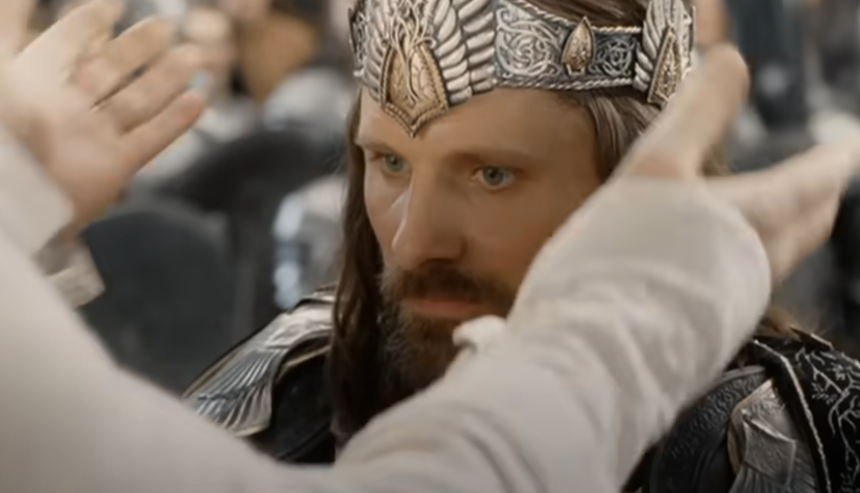 New Line Cinema, The Lord of the Rings: The Return of the King (2003)
New Line Cinema, The Lord of the Rings: The Return of the King (2003)
Rocky (1976)
In the iconic film Rocky, the journey is more important than the destination. Although Sylvester Stallone’s character ultimately doesn’t win the epic boxing match with Apollo Creed, he shows us all what hard work and perseverance look like. All that—and he gets the girl too.
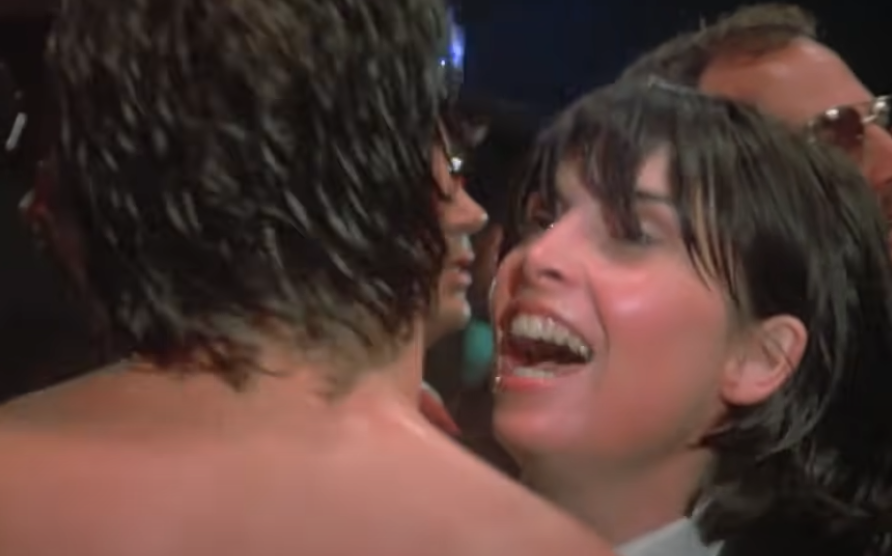 Chartoff-Winkler Productions, Rocky (1976)
Chartoff-Winkler Productions, Rocky (1976)
The Dark Knight Rises (2012)
In The Dark Knight Rises, Batman gets a happy ending—or does he? Although he appears to sacrifice himself to save Gotham from destruction, his friend and butler—Alfred—later sees Bruce Wayne alive and well in Florence. But, the audience walks away unsure if the ending is real or a figment of Alfred’s imagination.
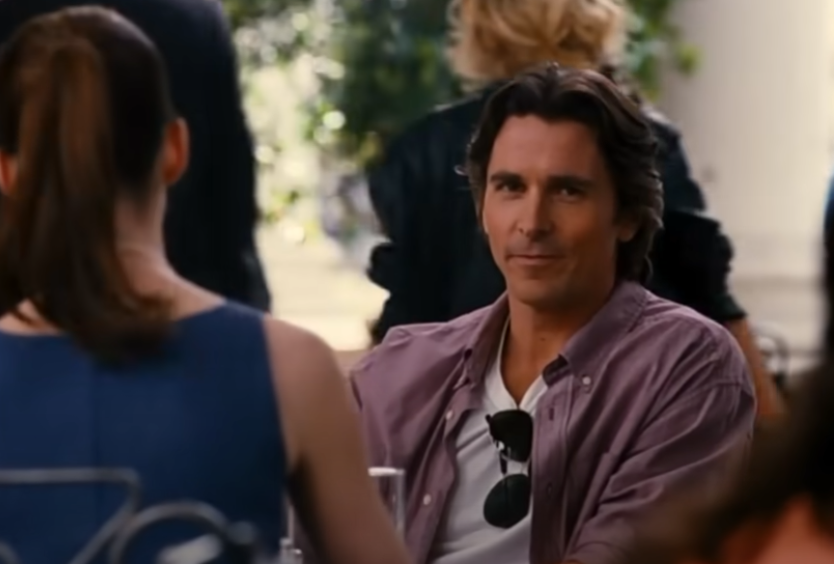 Warner Bros., The Dark Knight Rises (2012)
Warner Bros., The Dark Knight Rises (2012)
Indiana Jones And The Last Crusade (1989)
Although Indiana Jones and his father find the holy grail, they don’t quite complete their epic quest. When they attempt to leave with the cup, the temple collapses and Jones nearly dies. Jones chooses to leave the cup behind and rides off into the sunset with his father, both ready for their next adventure.
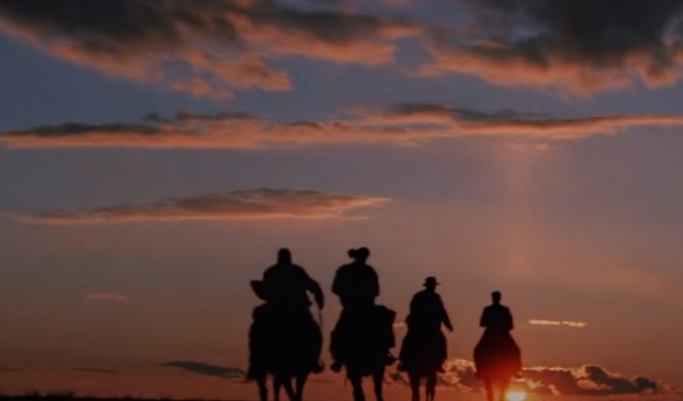 Paramount, Indiana Jones and the Last Crusade (1989)
Paramount, Indiana Jones and the Last Crusade (1989)
Fight Club (1999)
The cult film Fight Club is filled with epic plot twists. When the narrator of the film (played by Edward Norton) realizes that his alter ego, Tyler, is responsible for creating a terrorist plot, he shoots himself through the cheek, extinguishing his alter ego. Although it’s too late to stop the terrorist group from destroying skyscrapers, Norton’s character gets the girl in the last moments. Together, he and Marla hold hands while watching the city explode.
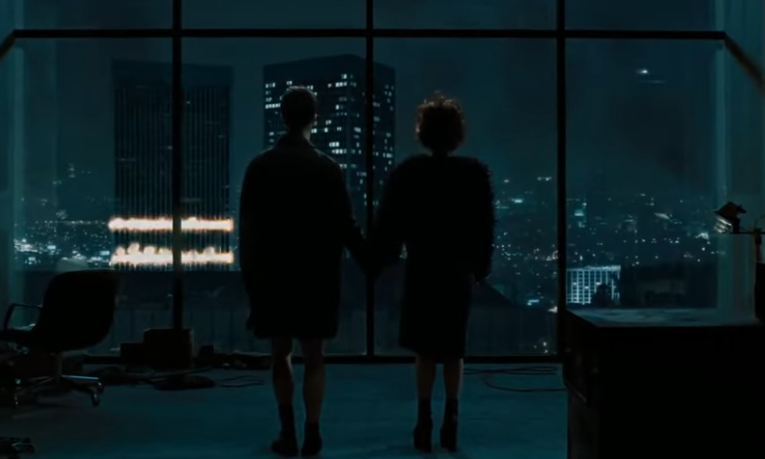 Fox 2000 Pictures, Fight Club (1999)
Fox 2000 Pictures, Fight Club (1999)
The Silence Of The Lambs (1991)
The ending of The Silence of the Lambs provides closure while at the same time leaving audiences in their seats, wondering what’s coming next. Dr Hannibal Lector calls Clarice Starling, who has just graduated from the FBI Academy, to tell her that he’s, “having an old friend for dinner” as the film ends.
 Strong Heart/Demme Production, The Silence of the Lambs (1991)
Strong Heart/Demme Production, The Silence of the Lambs (1991)
The Breakfast Club (1985)
The Breakfast Club remains iconic for its portrayal of teenage clique stereotypes—and its ending. After spending the day in detention together, the five students leave the school while Anthony Michael Hall’s character narrates a letter explaining what they learned that day. The final shot—of Judd Nelson’s character giving a fist pump as Simple Minds’ “Don’t You Forget About Me” plays—is one of the most memorable freeze-frames in film history.
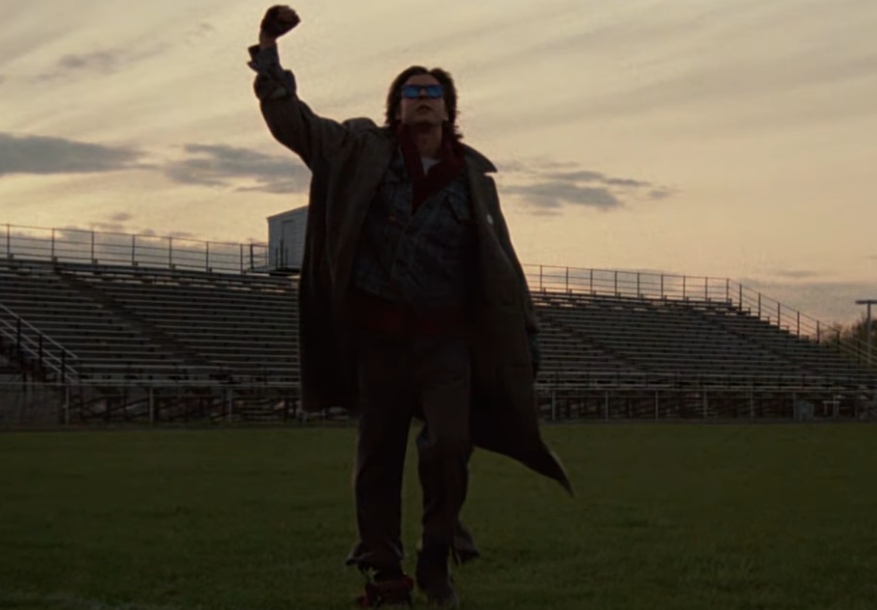 Universal, The Breakfast Club (1985)
Universal, The Breakfast Club (1985)
Whiplash (2014)
Whiplash follows Andrew Neiman as he struggles to become a top drummer under the tutelage of a harsh teacher. The film’s ending is immensely satisfying as Neiman delivers an epic drum solo after being humiliated by his teacher.
Predator (1987)
In Predator, a team of mercenaries led by Dutch (played by Arnold Schwarzenegger) battle an alien creature in a South American jungle. As the last man standing, Dutch goes head-to-head with the creature at the end of the film—and manages to exterminate it before getting whisked away in a chopper.
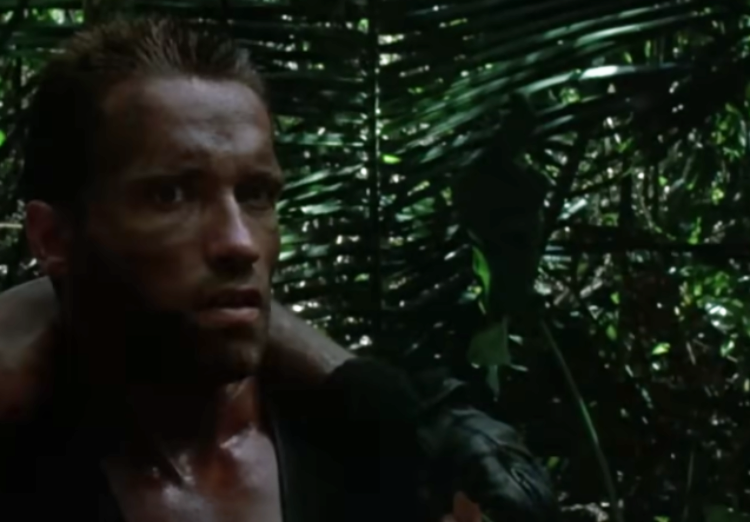 Twentieth Century, Predator (1987)
Twentieth Century, Predator (1987)
Gladiator (2000)
Russell Crowe’s Maximus, a former Roman general forced into slavery, seeks redemption as a gladiator in the 2000 film. When he finally goes up against the man who betrayed him, he is fatally wounded. It’s fulfilling to see Maximus reunited with his slain wife and son in the afterlife.
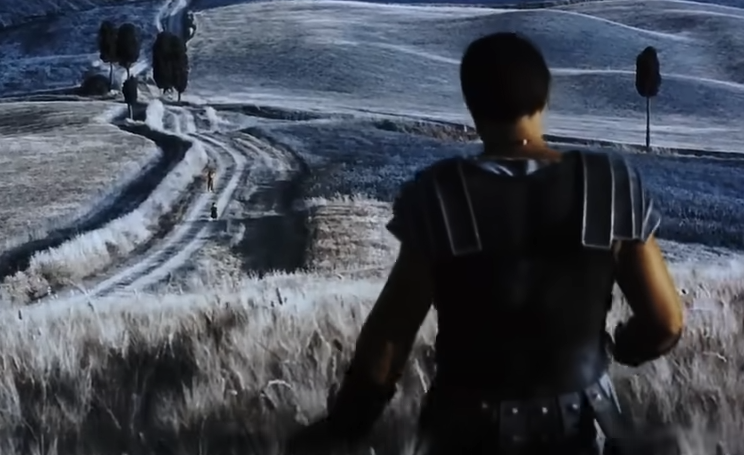 Focus Features, Gladiator (2000)
Focus Features, Gladiator (2000)
The Truman Show (1998)
In The Truman Show, Jim Carey’s character realizes that his whole life has been a lie, created and controlled for a TV show. In the final scene, Truman walks away from the set, seeking the freedom of real life.
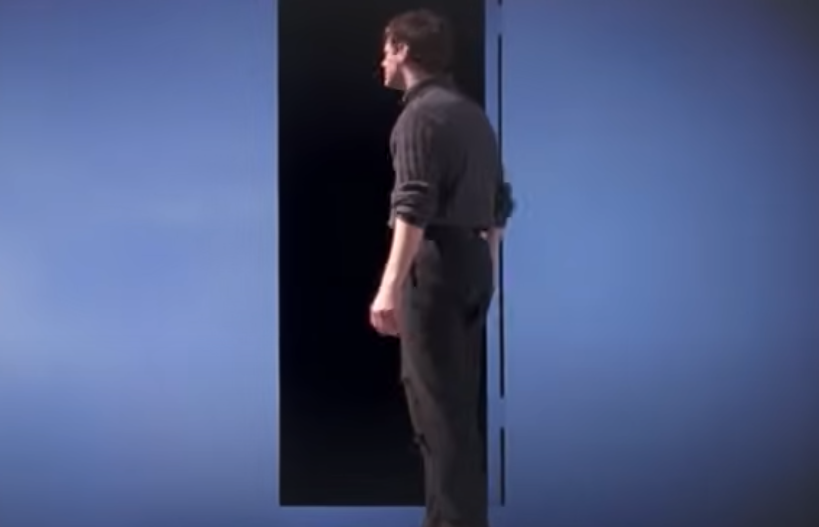 Paramount, The Truman Show (1998)
Paramount, The Truman Show (1998)
Good Will Hunting (1997)
Will Hunting is a genius stuck in a mundane life because he’s afraid of failure. Early in the film, his friend Chuckie says he’ll be insulted if Hunting doesn’t do something with his potential. At the end of the film, when Chuckie knocks on Hunting’s door and Hunting doesn’t answer, it’s satisfying to know that the film’s hero has finally taken his friend’s advice.
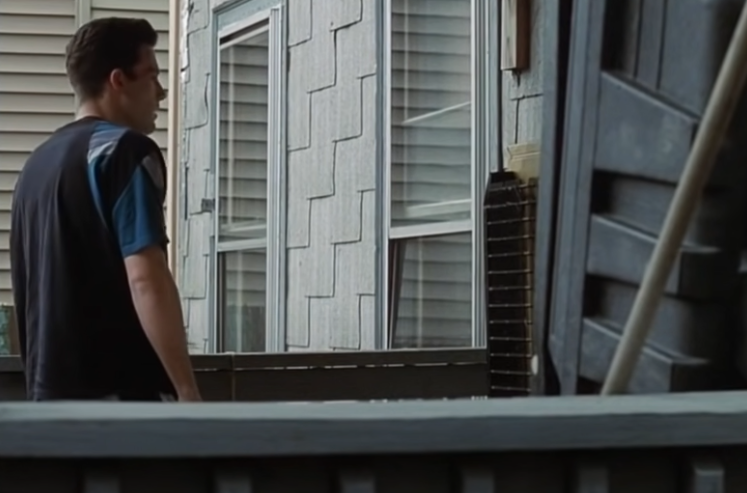 Miramax, Good Will Hunting (1997)
Miramax, Good Will Hunting (1997)
Harry Potter And The Deathly Hallows—Part 2 (2011)
It takes eight movies, but Harry Potter fans finally get the ultimate satisfaction in Harry Potter and the Deathly Hallows—Part 2. Not only does the final battle between good and evil end with the defeat of Voldemort, but the audience gets to see all the protagonists grown up in the future.
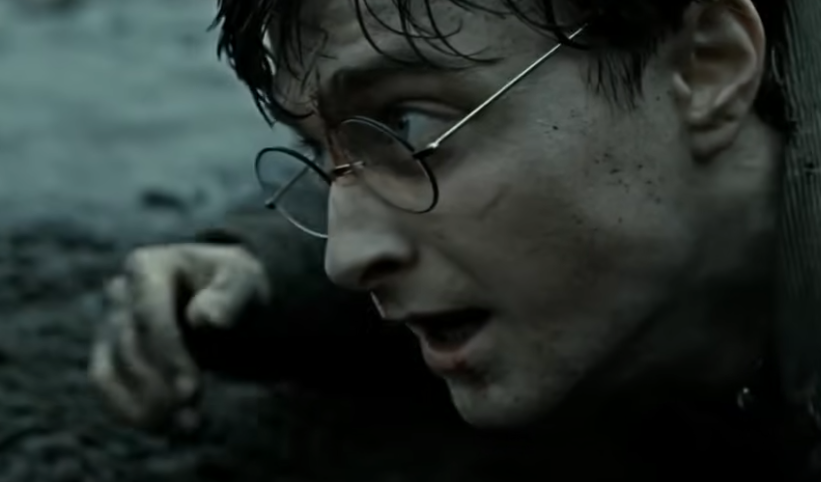 Warner Bros., Harry Potter and the Deathly Hallows: Part 2 (2011)
Warner Bros., Harry Potter and the Deathly Hallows: Part 2 (2011)
Get Out (2017)
After being kept on the edge of their seat for most of the movie, the audience can breathe a big sigh of relief at the end of Get Out. Chris, played by Daniel Kaluuya, manages to flee from his abductors only to be stopped by a squad car. Although he’s afraid of being racially profiled, he’s grateful to see that the driver is his friend and TSA agent, Rod.
It’s A Wonderful Life (1946)
At the beginning of the Christmas classic, It’s a Wonderful Life, George Bailey is facing financial ruin and contemplating ending his life. But at the end of the movie, Bailey is happily reunited with his family and his townspeople have pooled their money to help solve his financial woes.
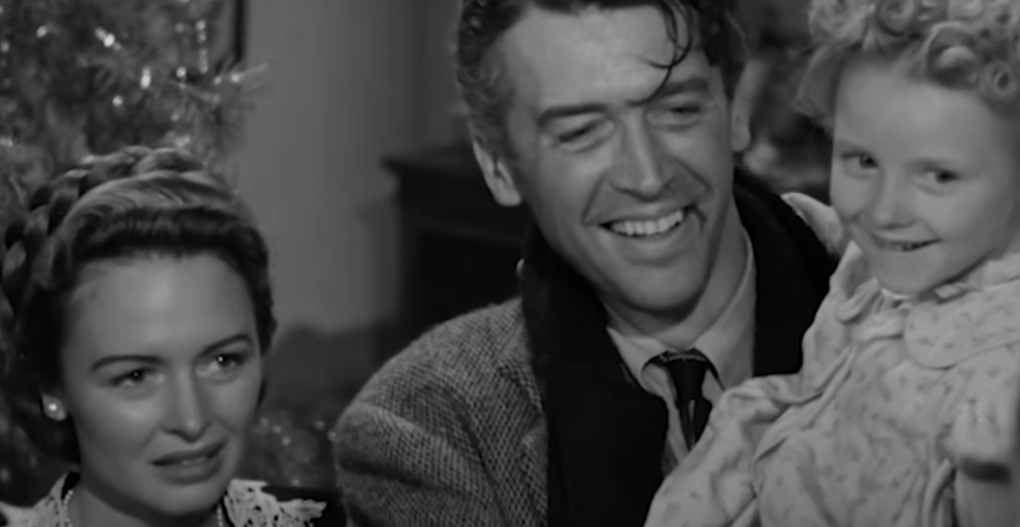 Liberty Films (II), It's a Wonderful Life (1946)
Liberty Films (II), It's a Wonderful Life (1946)
Memento (2000)
The ending of Memento is a unique collision of two divergent timelines. Although the ending offers some resolution to the film’s story, some big questions go unanswered. Still, there is satisfaction in knowing that Leonard will continue to seek revenge for his wife.
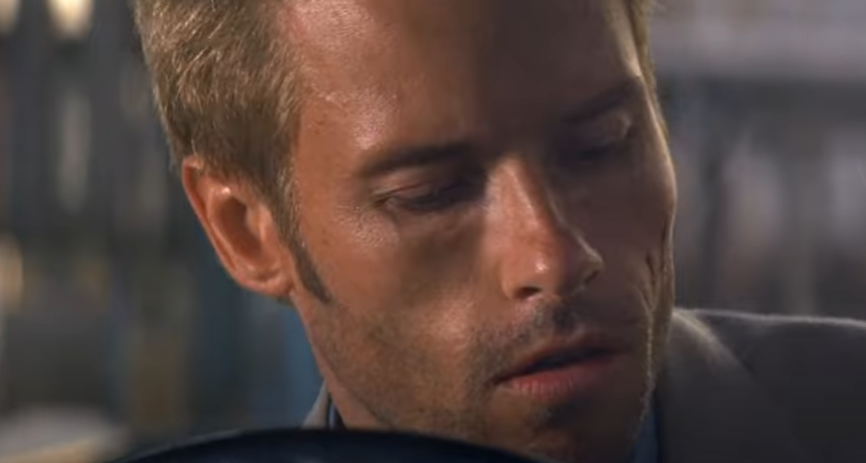 Newmarket Capital Group, Memento (2000)
Newmarket Capital Group, Memento (2000)
Rudy (1993)
Seeing Rudy finally suiting up for the Notre Dame Fighting Irish, leading the team out of the tunnel, and getting on the field after overcoming many significant obstacles is a moment of joy for the entire audience. It’s even more satisfying that the events are based on a true story.
Furious 7 (2015)
As the seventh installment of the Fast & Furious franchise, Furious 7 is considered by many to be the franchise’s best film. Although it’s emotional, it’s also satisfying to see Paul Walker in his final film role. Walker was a passenger in a fatal car crash while filming was under way.
Back To The Future Part III (1990)
Although Back to the Future Part III is not as beloved as the first film of the trilogy, it brings the franchise to a satisfying close. Near the end of the third film, Doc appears trapped in 1885, which doesn’t seem terrible since he’s there with the woman he’s fallen in love with. Even so, he manages to return to 1985 at the very end of the film, to see Marty once again.
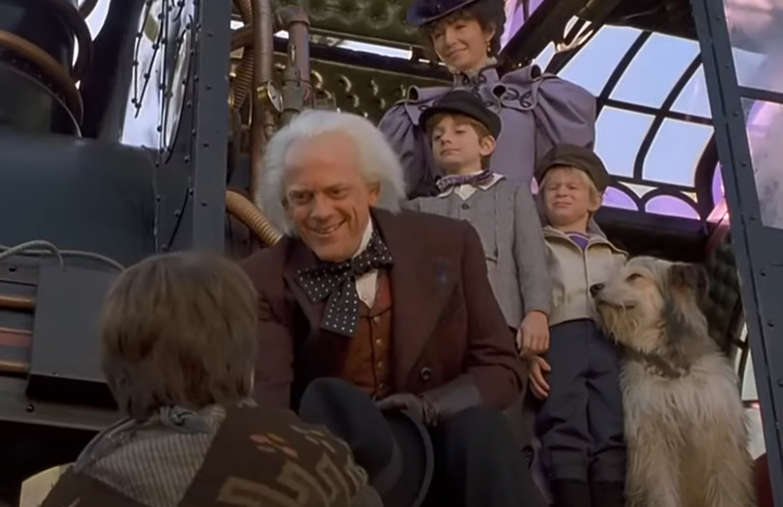 Universal, Back to the Future Part III (1990)
Universal, Back to the Future Part III (1990)
The Shawshank Redemption (1994)
A central theme of The Shawshank Redemption is hope. It’s gratifying for the audience to see that hope come to fruition in the film’s final scene, when Red, recently released from Shawshank, finds Andy on the beach in Mexico, where he retreated after his escape.
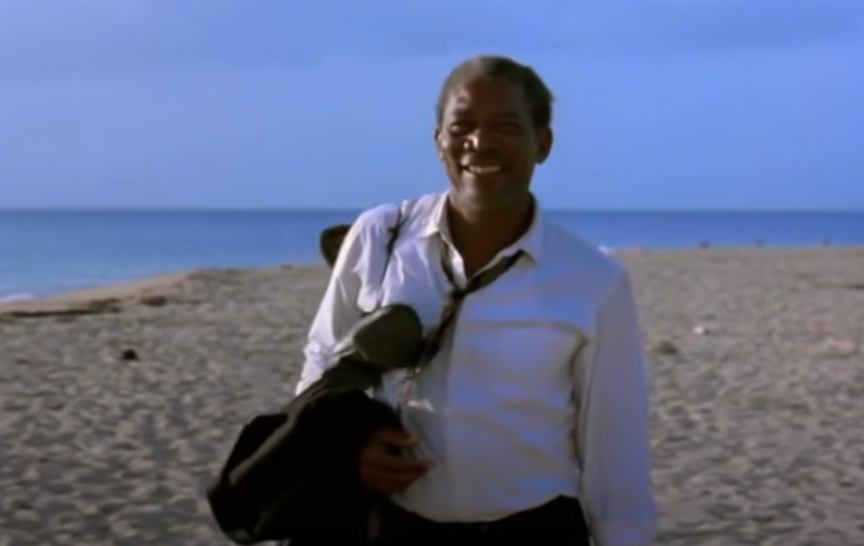 Warner Bros., The Shawshank Redemption (1994)
Warner Bros., The Shawshank Redemption (1994)
Heat (1995)
Fans of Robert De Niro and Al Pacino were thrilled when it was announced that the two legendary actors would star together in Heat. Although Pacino’s character mortally wounds De Niro’s at the film’s end, it’s satisfying to see the two hold hands, symbolizing their respect for each other.
The Usual Suspects (1995)
The thriller The Usual Suspects begins with a simple plot and, as the story unfolds, layers of deceit are added. The mystery revolves around the true identity of Keyser Söze, who hires a group of crooks to pull off a heist. The plot resolves itself very adeptly with one of the most brilliant plot twists in movie history, leaving the audience in awe.
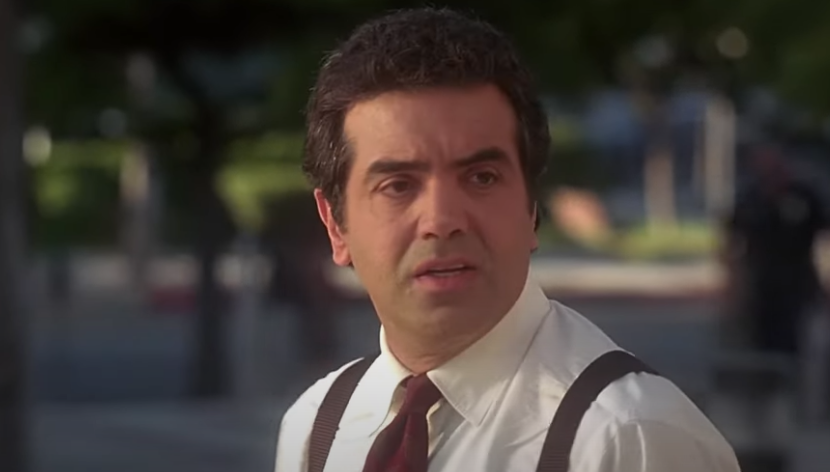 PolyGram Filmed Entertainment, The Usual Suspects (1995)
PolyGram Filmed Entertainment, The Usual Suspects (1995)
Arrival (2016)
The heroine of Arrival—Louise Banks, played by Amy Adams—is a linguistics professor recruited by the military to communicate with a group of aliens who have landed on earth. At the end of the movie, the connections Banks established with the aliens allow her to experience time differently and, as a result, she can see into her future, giving the audience a glimpse of what awaits her as well.
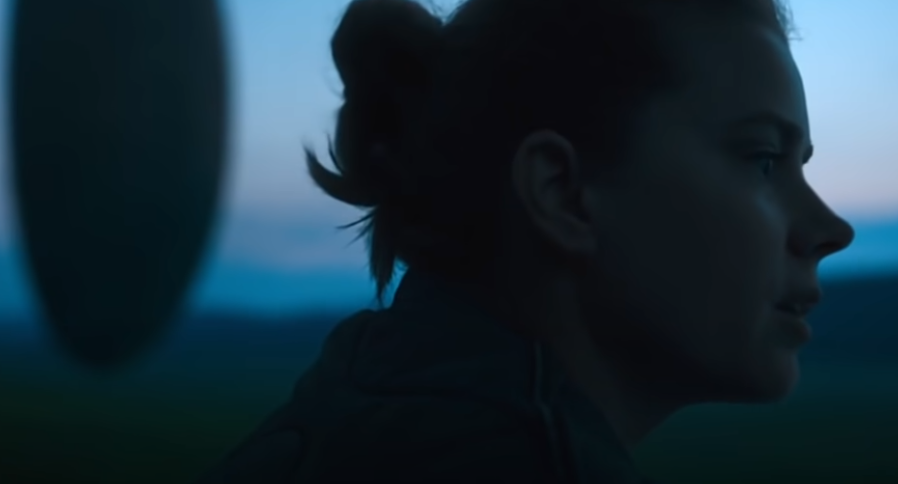 Lava Bear Films, Arrival (2016)
Lava Bear Films, Arrival (2016)
The Good, The Bad And The Ugly (1966)
The final scene of The Good, the Bad and the Ugly remains one of cinema’s most iconic endings. The legendary stand-off between Lee Van Cleef’s Angel Eyes, Clint Eastwood’s Blondie, and Eli Wallach’s Tuco is noted for its long duration, the tension between the characters, and the movie’s score.
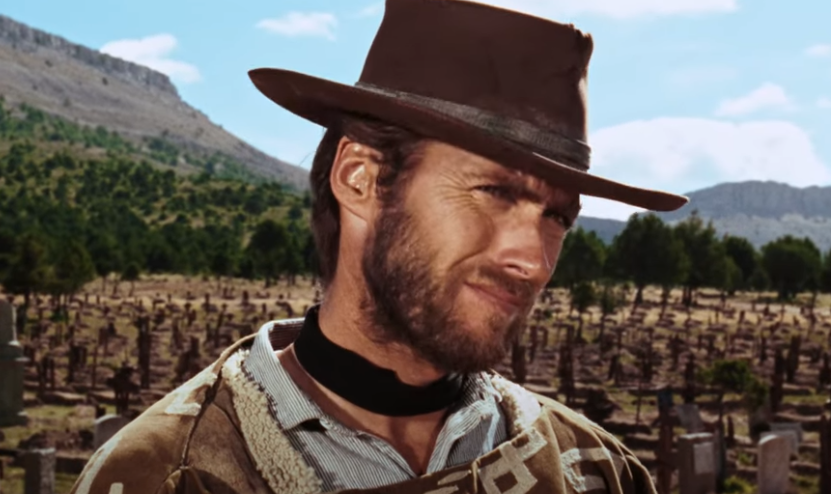 Produzioni Europee Associate (PEA), The Good, the Bad and the Ugly (1966)
Produzioni Europee Associate (PEA), The Good, the Bad and the Ugly (1966)
Before Sunset (2004)
The second film of a trilogy, Before Sunset reunites Ethan Hawke (Jesse) and Julie Delpy (Céline). Nine years after they spent the night strolling through Vienna, with romantic sparks flying, they reconnect in Paris. At the film's end, Céline tells Jesse: “Baby, you are gonna miss that plane”. Jesse replies: “I know”.
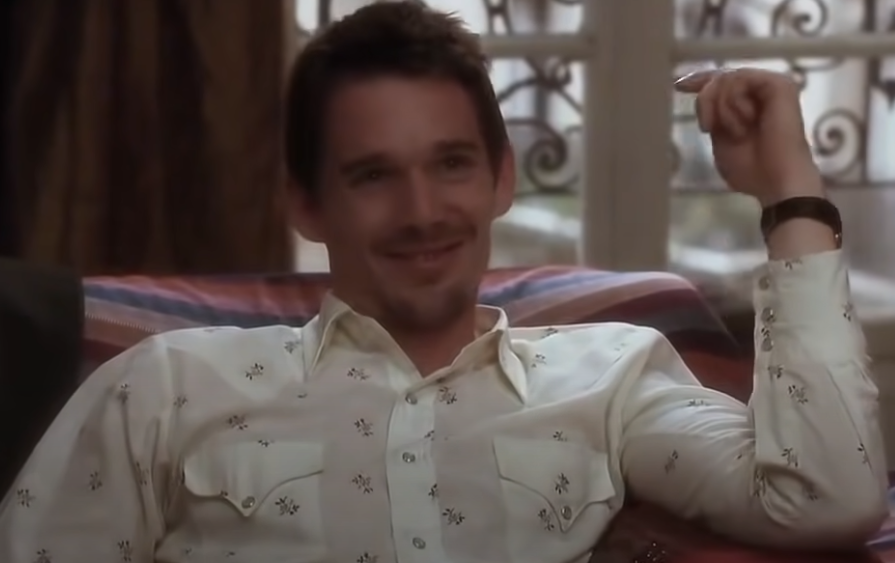 Warner Independent Pictures (WIP), Before Sunset (2004)
Warner Independent Pictures (WIP), Before Sunset (2004)
The Untouchables (1987)
Eliot Ness—played by Kevin Costner in The Untouchables—is committed to bringing down Al Capone and his bootlegging empire. Shortly after Capone is convicted, Prohibition is repealed. When a reporter asks what he’ll do next, Ness says, “I think I’ll have a drink”.
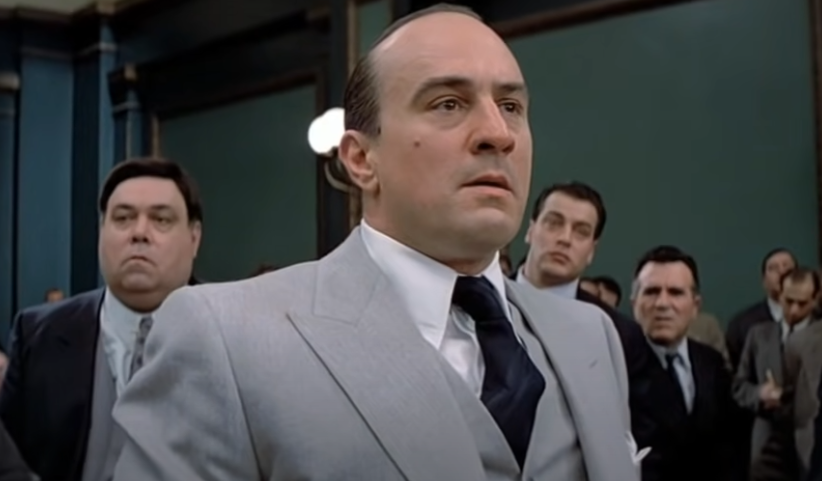 Paramount, The Untouchables (1987)
Paramount, The Untouchables (1987)
Jaws (1975)
When a shark starts terrorizing the beaches of a New England tourist town in Jaws, the outcome is inevitable. After an epic two-day battle, two of the three men who went out to search for the shark are victorious and the waters are safe to swim in once again.
When Harry Met Sally (1989)
Did the audience ever doubt that Harry and Sally would end up together? Not only do the two turn out to be one of cinema’s most celebrated couples but the final scene of When Harry Met Sally is regarded as one of the best rom-com endings ever.
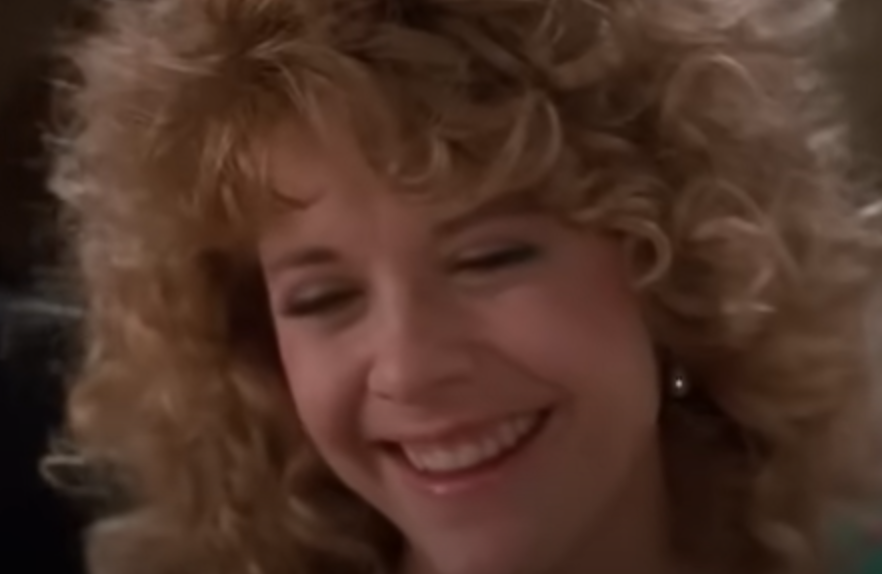 Castle Rock, When Harry Met Sally... (1989)
Castle Rock, When Harry Met Sally... (1989)
Home Alone (1990)
The ending of the holiday classic Home Alone ties up all of the movie’s loose ends as neatly as a bow on a Christmas gift. Harry and Marv are taken into custody; Old Man Marley’s granddaughter shows up to celebrate Christmas with him; and Kevin’s entire family returns on Christmas morning.
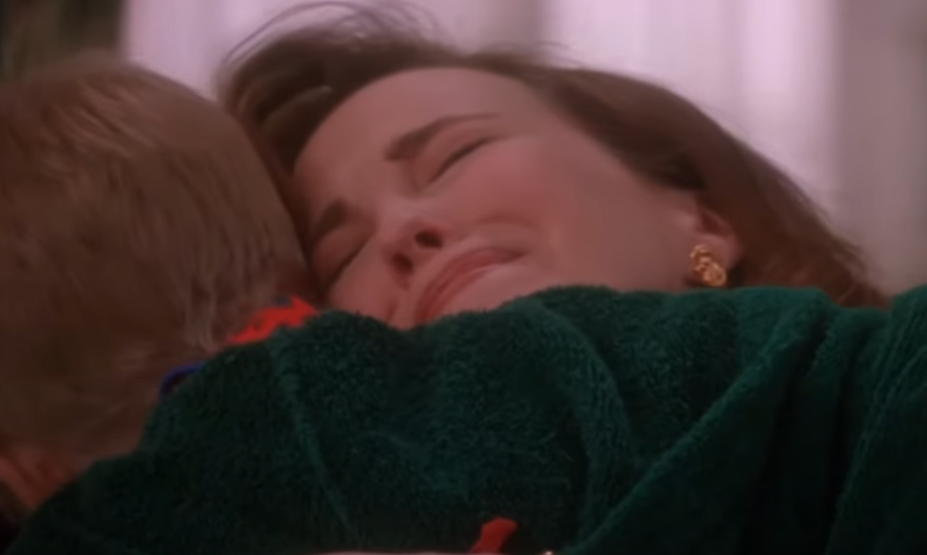 Twentieth Century, Home Alone (1990)
Twentieth Century, Home Alone (1990)
A Beautiful Mind (2001)
In A Beautiful Mind, Russell Crowe’s character—John Nash—is a genius who struggles to understand love and emotion. But at the end of the film, Nash credits his success to his wife as he accepts his Nobel prize.
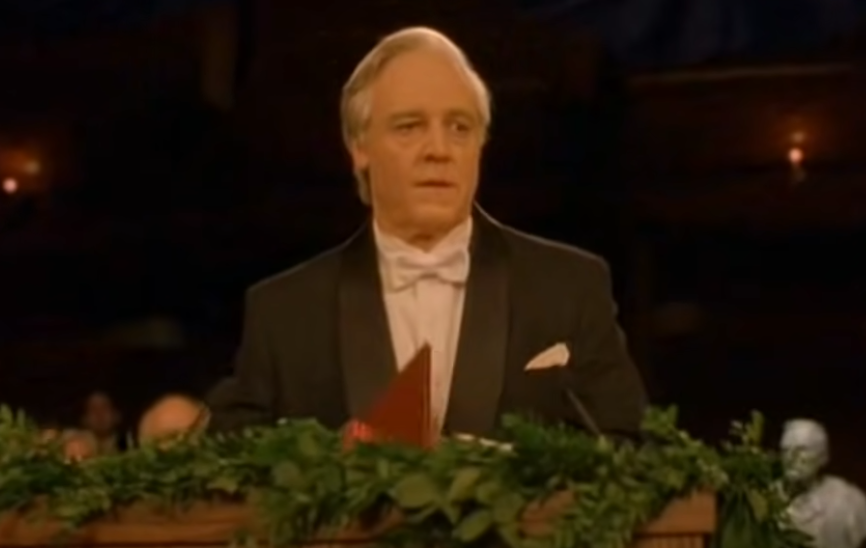 Universal, A Beautiful Mind (2001)
Universal, A Beautiful Mind (2001)
Schindler’s List (1993)
The outcome of Oskar Schindler’s work during WWII is beautifully presented in the final scene of Schindler’s List. As the actors walk away from Schindler’s munitions factory and towards freedom, the scene shifts from black and white to color. In color, some of the real people Schindler helped and the actors portraying them walk by his gravesite in Jerusalem and place rocks on it, as a sign of respect.
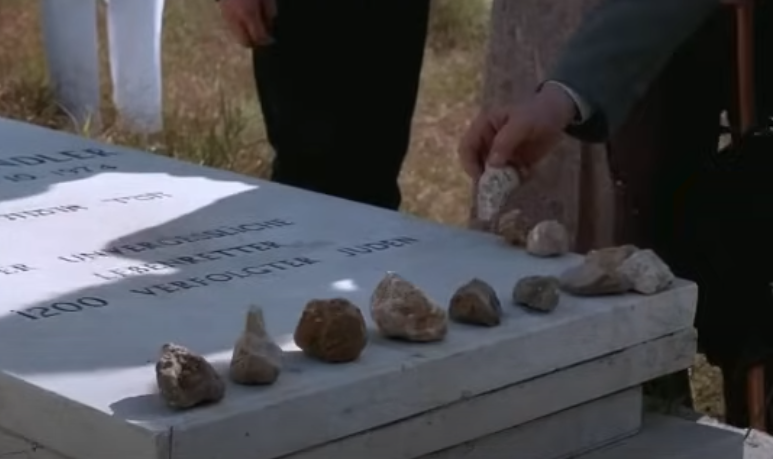 Universal, Schindler's List (1993)
Universal, Schindler's List (1993)
Slumdog Millionaire (2008)
After a lifetime of poverty and hardship, Jamal, the hero of Slumdog Millionaire, not only wins the jackpot on a game show but also reunites with the girl of his dreams in the movie’s final moments. That Bollywood-style dance scene at the train station as the credits roll nicely captures the joy of the movie’s ending.
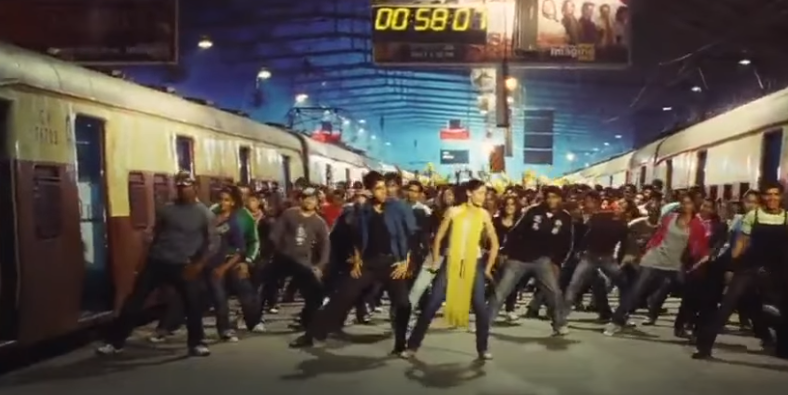 Warner Bros., Slumdog Millionaire (2008)
Warner Bros., Slumdog Millionaire (2008)
The Incredibles (2004)
It doesn’t seem logical for a cliffhanger ending to be satisfying, but it is in the Pixar film, The Incredibles. Although they were keeping their superhero identities hidden, the Parr family masks up when a new villain—The Underminer—appears. The audience never finds out what happens next—and that’s okay. The film’s ending demonstrates that the Parrs are able to embrace and balance both halves of their identities.


